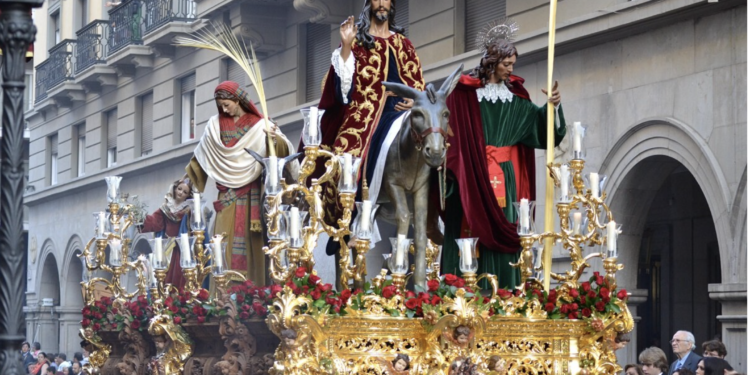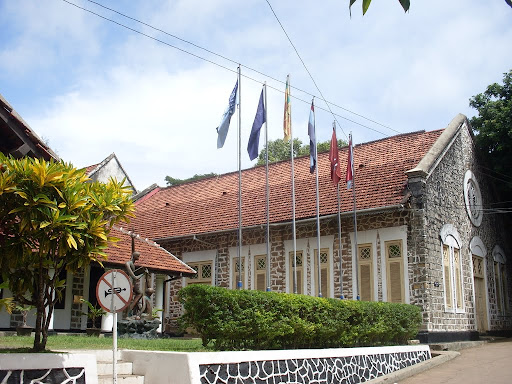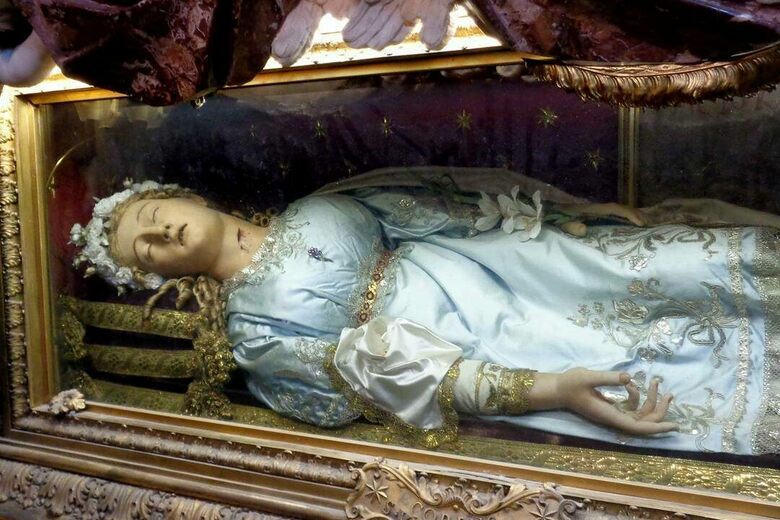SHROUD OF TURIN, Is it a fake or a relic?

The Shroud of Turin (la Sindone di Torino, as the Italians call it) or the Holy Shroud (la Sacra Sindone), is a long strip of linen measuring 4.3 metres long and 1.1 metres wide upon which the bodily image of a tortured and crucified man is miraculously imprinted. For centuries, millions of members of the Catholic Church, in particular, have venerated it as the actual burial garment used to wrap Jesus of Nazareth after His crucifixion. The Gospels of Matthew, Mark and Luke state that Joseph of Arimathea, a Pharisee, wrapped the body of Jesus in a piece of linen cloth and placed it in a new tomb. Cloaked in mystery, this mostly venerated relic of the Catholic world, preserved since 1578 in the cathedral of San Giovanni Battista in Turin, Italy, has given rise to controversial and opposing stands of scientists and researchers of different disciplines, and photographic experts as to its authenticity.
The legend has it that the shroud was secretly taken away from Judea around 30 A. D. and was housed for centuries in Edessa, Turkey, and Constantinople, the present-day Istanbul following its taking over by the Ottomans. Following the sacking of Constantinople by crusaders in 1204 A. D., the cloth was smuggled to safety in Athens, Greece where it stayed until 1225 A. D. The shroud first emerged historically in 1354 when a famous French knight by the name of Geoffroi de Charny in the small town of Lirey, France had it in his possession. In 1389 when the shroud was on display, the local bishop of Troyes denounced it as a forgery on the part of a cunning artist. Although the antipope Clement VII of Avignon refrained from expressing his view on the authenticity of the relic, sanctioned its use as an object of devotion provided that it be exhibited as an “image or representation” of the true shroud.
Secondo Pia (1855-1941), an Italian lawyer and amateur photographer, took the first photographs of the Shroud of Turin in 1898 when he found, while developing them, that the human image on the shroud can be discerned more clearly in a black and white photographic negative. This negative image, with the detailed likeness of a bearded man with visible wounds on his body, was approved by the Catholic Church as part of its popular devotion to the Holy Face of Jesus.
On the occasion of the 100th year of Pia’s first photograph, Pope St. John Paul II visited Turin Cathedral in 1998 and said in his address that the shroud is an image of God’s love as well as of human sin. He also called the shroud an icon of the suffering of the innocent in every age.
Human blood or red pigment?
Walter Cox McCrone (1916-2002) was a reputed American chemist who worked extensively on applications of polarised light microscopy and he is sometimes regarded as the “father of modern microscopy”. In 1978 he took samples from the surface of the cloth using adhesive tape. Based on his examination, McCrone claimed that the image on the shroud had been painted with a dilute solution of red ochre pigment in a gelatin medium. He also found that the apparent blood stains were painted with vermillion pigment, also in a gelatin medium. Vermillion was a pigment most often used between antiquity and the 19th century from the powdered mineral cinnabar (a form of mercury sulfide). Nevertheless, McCrone’s findings were disputed by researchers and the nature of the image of the shroud continued to be debated.
It was not until 1969 that scientists were allowed to examine the fabric directly, entrusted with the task of advising on preservation techniques and enabling future testing. This paved the way for the establishment of the U. S.-led Shroud of Turin Research Project (STURP) which was granted five days of continuous access to the shroud in 1978.
The project consisted of 33 members from various scientific disciplines and their credentials included high-level posts at 20 prestigious research institutions. They arrived in Turin with loads of equipment and worked in shifts 24 hours a day. An associate team of European scientists acted as expert observers.
Their analyses found no sign of artificial pigments. The project’s 1981 report declared that the shroud bears a real human form of a scourged, crucified man and it is not the product of an artist. “The blood stains are composed of haemoglobin and also give a positive test for serum albumin”, it said. But the report also conceded that no combination of “physical, chemical, biological or medical circumstances” could adequately account for the image. “The Shroud of Turin remains now, as it has in the past, a mystery”, was the conclusion of the STURP team.
However, McCrone insisted on arguing that the shroud had been painted in the 14th century and that it showed no traces of actual blood. He also argued that the STURP members lacked relevant expertise in the chemical microanalysis of historical artworks and that their non-detection of pigment in the shroud’s image was consistent with the sensitivity of the instruments and techniques they used. For his work on the shroud, McCrone was honoured with the American Chemical Society’s National Award in Analytical Chemistry in 2000.
Forgery of a mediaeval conman?
In 1988, the Vatican authorised three laboratories in the UK, USA and Switzerland to subject the shroud to the cutting-edge carbon-14 dating. Small postage stamp-sized pieces from a corner of the fabric were sent to the University of Oxford’s Radiocarbon Accelerator Unit (RAU), the University of Arizona and the Swiss Federal Institute of Technology. All the three laboratories came to the conclusion that the linen material of the shroud had been produced sometime between 1260 and 1390. However, some scientists doubted the researchers’ methodology. On receiving the results of the tests, the Vatican encouraged scientists to conduct further investigations into the genuineness of the shroud and recommended that Christians continue to pay homage to the shroud as an inspiring image of Christ.
But, according to a report in The Guardian in April 2022, David Rolfe, a film-maker, was not prepared to accept the findings of Oxford University. His documentary The Silent Witness had brought the shroud into the public eye in modern times and he had converted to Christianity as a result of his research. Rolfe was convinced that the carbon dating carried out under the direction of the British Museum and Oxford University had been flawed. In his recent film Who Can He Be? Rolfe asserted that the sample used for the tests was too small and taken from a corner where the shroud was likely to have been repaired over the centuries.
If the shroud is a mediaeval forgery, Rolfe challenged to repeat the exercise and create something similar today. He even offered the British Museum a donation of $1m to simulate it. He said that if this is a forgery it is the most ingenious forgery in history, dating back almost 2000 years, to a time of far less sophisticated forgery techniques.
Radiation theory
Many would argue that, even if the shroud could be proved to be the burial cloth of the man named Jesus who was crucified 2000 years ago, that does not amount to proof of his resurrection: the central tenet of Christian belief. “Where is the evidence?”, sceptics would ask. But Rolfe is unperturbed as he says that the image on the cloth seems to have come from a massive burst of radiation, emitted in a fraction of a second at the time of the resurrection.
Italian physicist Paolo di Lazzaro and his colleagues at Italy’s National Agency for New Technologies, Energy and Sustainable Economic Development (ENEA) conducted five years of experiments, using state-of-the-art lasers on raw linen, in an attempt at simulating the image’s colouration. The ENEA team, which published their findings in 2011, came tantalizingly close to approximating the image’s distinctive hue on a few square centimetres of fabric but they were unable to match all the physical and chemical characteristics of the shroud image. Nor could they reproduce a whole human figure.
Di Lazzaro, a leading expert on the shroud, questions how the image was produced, regardless of its age, as every scientific attempt to replicate it in a lab has failed. Its precise hue is highly unusual and the colour’s penetration into the fabric is extremely thin, less than 0.7 micrometres (0.000028 inches), one thirtieth the diameter of an individual fibre in a single 200-fibre linen thread.
The radiation theory suggests that a “divine light” in the tomb might have seared the crucified form of Jesus onto the shroud. However, STURP member Alan Adler stated that this theory is not generally accepted as scientific, given that it runs counter to the laws of physics. Yet, Di Lazzaro opines that one could look at hypotheses outside the realm of science, a sort of miracle. “But a miracle cannot be investigated by the scientific method”, he points out. If the most advanced technologies available in the 21st century could not produce a facsimile of the shroud image, he questions, how could it have been executed by a mediaeval forger?
“It is unlikely that science will provide a full solution to the many riddles posed by the shroud”, concludes Di Lazzaro. “A leap of faith over questions without clear answers is necessary-either the ‘faith’ of sceptics, or the ‘faith’ of believers”, he says.
Although the Catholic Church has never taken an official stance on the authenticity of the relic, tens of thousands of people flock to Turin in Italy every year to get a glimpse of this revered object, believing that it wrapped the tortured and bleeding body of Jesus after His crucifixion.***
IMAGE: A float representing Jesus Christ entering the city of Jerusalem on Palm Sunday.
Photographer | Enrique Laguna







